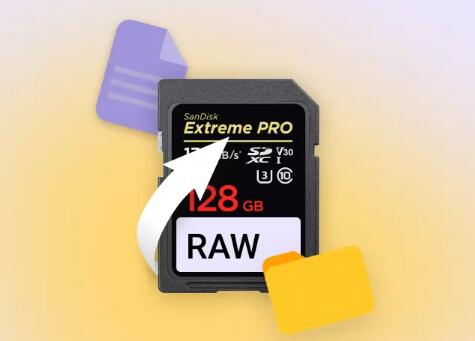SanDisk is one of the most trusted brands when it comes to flash memory products, particularly SD cards used in cameras, smartphones, tablets, and various digital devices. Despite their reliability, SanDisk SD cards can still fall victim to corruption, accidental deletion, formatting errors, and physical damage. When this happens, data recovery becomes crucial.
Accidental Deletion: Files are removed from the card unintentionally.
Formatting Errors: Users may accidentally format the card in-camera or on a computer.
Corruption: Power failures, improper ejection, or file system errors can corrupt the card.
Virus Attacks: Malware can delete or hide files.
Physical Damage: Broken connectors, water damage, or internal component failure.
Wear and Tear: Flash memory degrades over time, especially with repeated write cycles.

Initial Steps After Data Loss
The actions you take immediately after noticing data loss can significantly affect recovery success:
Stop Using the Card: Avoid writing new data to prevent overwriting lost files.
Do Not Format: Even if prompted, don’t format the card until you attempt recovery.
Remove Safely: Always use the ‘eject’ option before removing the SD card.
Inspect for Damage: If physical damage is visible, avoid using recovery software and consult a professional.
Data Recovery Methods
Method 1: Using Data Recovery Software
Panda Assistant
Panda Assistant uses intelligent scanning algorithms designed specifically to retrieve data from all types of SanDisk SD cards, including SanDisk Ultra, Extreme, and Extreme Pro series. Whether the card was used in a DSLR, action camera, drone, or smartphone, Panda Assistant can effectively scan and recover a wide range of file types, including images (JPG, RAW), videos (MP4. MOV), audio files, and documents.
The process is simple: insert your SanDisk SD card into a card reader, launch Panda Assistant, select the card from the list of drives, and begin the scan. Within minutes, the software presents a preview of recoverable files, allowing you to select what you wish to restore. This intuitive interface ensures that even non-technical users can confidently complete the recovery process.
Method 2: Using Command Prompt (Windows)
For minor corruption or file system errors, Windows’ built-in tools can help.
Connect the SD card.
Open Command Prompt as Administrator.
Type: chkdsk X: /f (replace X with the card’s drive letter).
Let the system fix errors.
Sometimes this process reveals hidden files or resolves read errors.
Method 3: Restoring from Backup
If you habitually back up your files (e.g., using cloud services like Google Photos or OneDrive), check those platforms for copies of lost data. This is the simplest and most reliable form of recovery if backups exist.
Method 4: Professional Data Recovery Services
If the card is physically damaged or if software recovery fails, professional help may be required. Companies like DriveSavers, Ontrack, and Secure Data Recovery offer specialized services. Though expensive, they often succeed where DIY methods fail.
File Types Commonly Recovered
Most SanDisk SD card recovery software supports the following:
Images: JPG, PNG, CR2. NEF, TIFF, BMP
Videos: MP4. MOV, AVI, MTS
Audio: MP3. WAV, AAC
Documents: DOCX, XLSX, PDF, TXT
Others: ZIP, RAR, HTML
Tips for a Successful Recovery
Use high-quality card readers for stable connections.
Avoid saving recovered files to the same SD card.
Choose software that allows file preview before recovery.
Look for tools with deep scan options for more thorough searches.
Ensure sufficient storage space on your recovery destination drive.
Preventing Future Data Loss
Data loss can often be avoided by adopting best practices:
Regular Backups: Automate backups to cloud storage or an external drive.
Safe Ejection: Always safely eject SD cards from devices.
Avoid Full Capacity: Leave some free space to reduce corruption risks.
Use Quality Hardware: Choose reputable brands for readers and devices.
Antivirus Protection: Keep devices clean of malware.
Update Firmware: Cameras and devices often release updates to improve SD card compatibility.
Case Studies
Case Study 1: Wedding Photographer
A photographer accidentally formatted a 64GB SanDisk Extreme Pro SD card with wedding photos. Using SanDisk RescuePRO, they were able to retrieve 98% of the images due to immediate action and no overwriting.
Case Study 2: Drone Footage Loss
A drone user experienced a sudden power loss mid-flight, corrupting the SD card. Disk Drill helped recover essential 4K video files after a deep scan.
Case Study 3: College Student
A student deleted a project folder from a SanDisk Ultra SD card. Recuva enabled quick recovery thanks to the file not being overwritten.
Losing data from a SanDisk SD card can be stressful, but it is often reversible with the right tools and methods. From easy-to-use software like RescuePRO and Recuva to more advanced solutions like Disk Drill and professional services, options are available for all scenarios. By acting quickly, avoiding overwriting, and following best practices, users can maximize their chances of successful recovery and safeguard their precious data in the future.
About us and this blog
Panda Assistant is built on the latest data recovery algorithms, ensuring that no file is too damaged, too lost, or too corrupted to be recovered.
Request a free quote
We believe that data recovery shouldn’t be a daunting task. That’s why we’ve designed Panda Assistant to be as easy to use as it is powerful. With a few clicks, you can initiate a scan, preview recoverable files, and restore your data all within a matter of minutes.

 Try lt Free
Try lt Free Recovery success rate of up to
Recovery success rate of up to









